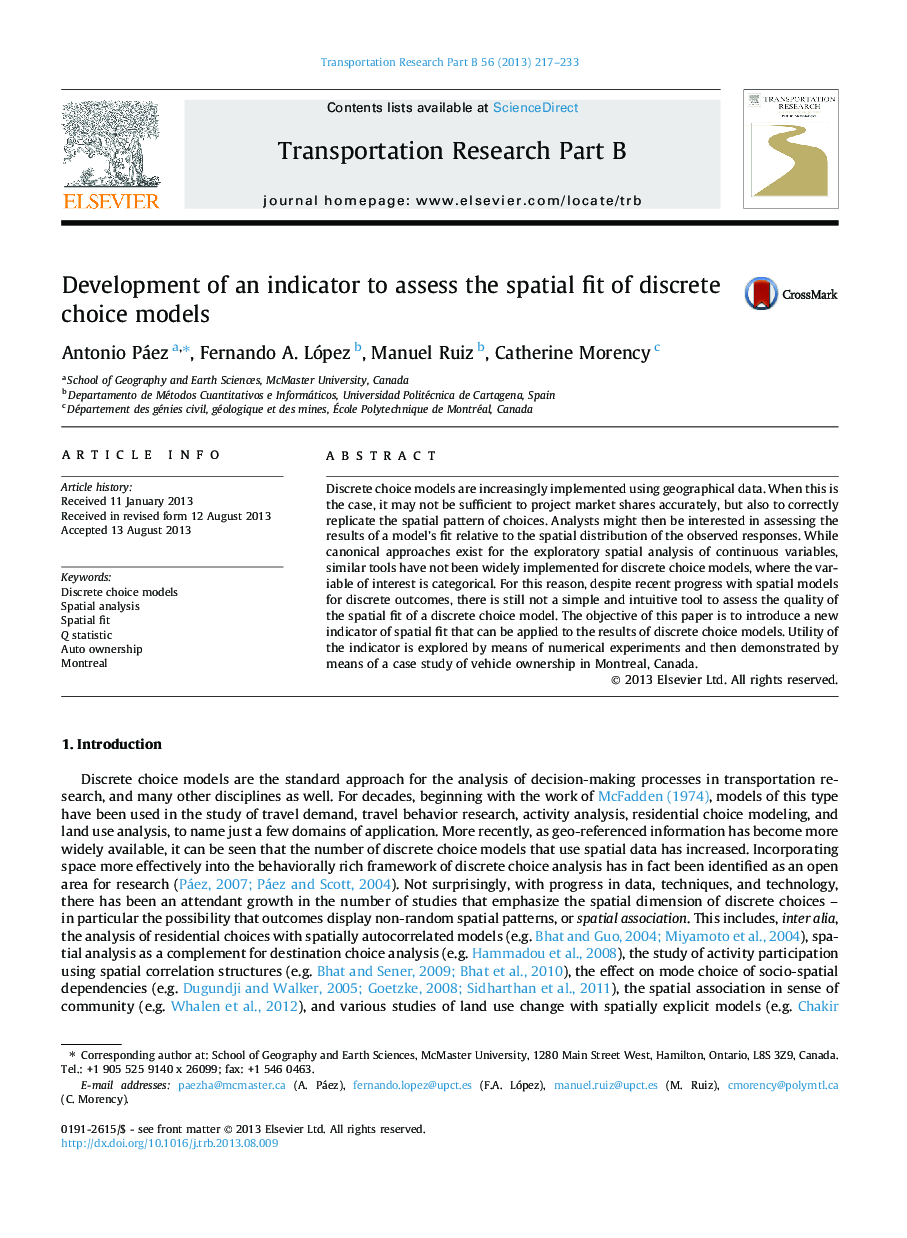| Article ID | Journal | Published Year | Pages | File Type |
|---|---|---|---|---|
| 1132156 | Transportation Research Part B: Methodological | 2013 | 17 Pages |
•Discrete choice analysis is increasingly conducted using geo-referenced information.•An indicator of spatial fit is developed for discrete choice models.•The inferential framework to test for spatial fit is also developed.•Numerical experiments provide guidelines for the application of the indicator.•Application of the indicator is demonstrated with an example of vehicle ownership in Montreal.
Discrete choice models are increasingly implemented using geographical data. When this is the case, it may not be sufficient to project market shares accurately, but also to correctly replicate the spatial pattern of choices. Analysts might then be interested in assessing the results of a model’s fit relative to the spatial distribution of the observed responses. While canonical approaches exist for the exploratory spatial analysis of continuous variables, similar tools have not been widely implemented for discrete choice models, where the variable of interest is categorical. For this reason, despite recent progress with spatial models for discrete outcomes, there is still not a simple and intuitive tool to assess the quality of the spatial fit of a discrete choice model. The objective of this paper is to introduce a new indicator of spatial fit that can be applied to the results of discrete choice models. Utility of the indicator is explored by means of numerical experiments and then demonstrated by means of a case study of vehicle ownership in Montreal, Canada.
